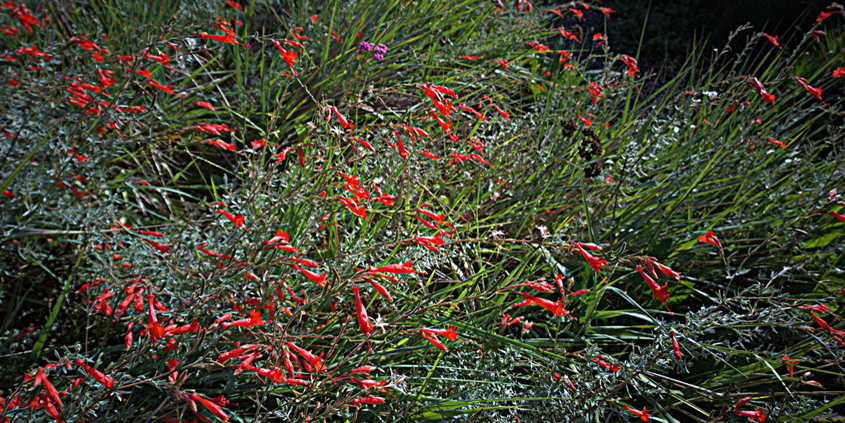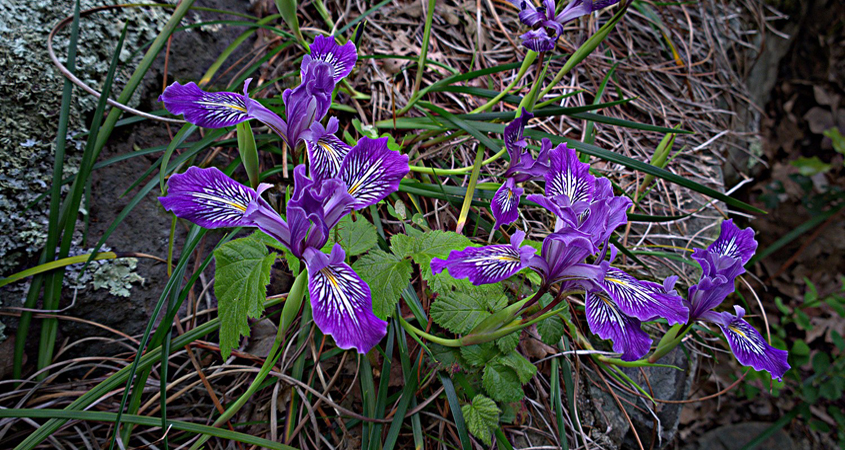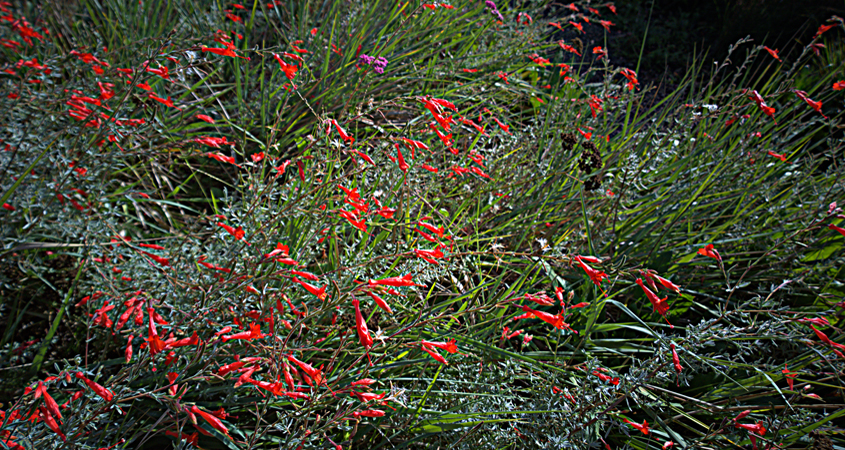 Everett’s California Fuchsia is an example of a plant that doesn't like to have wet feet, meaning roots sitting in water. Photo: Wikimedia Commons
Everett’s California Fuchsia is an example of a plant that doesn't like to have wet feet, meaning roots sitting in water. Photo: Wikimedia Commons Get Down to the Roots Of Your Landscaping
Plants don’t literally have feet to take them on a walk, but landscapers often refer to a plant’s “feet,” or their roots. Plants like – and need – water on their roots to thrive. While plants absorb water through their leaves, it’s not very efficient due to evaporation. Roots absorb the bulk of water a plant needs to thrive through small root hairs, which are thin-walled outgrowths of the plant’s epidermis. The film of water surrounding soil particles provides its irrigation supply.
Horticulturists refer to plant roots in soggy soil as “wet feet.” Plants that can thrive without too much water on their roots are said to have “dry feet.”
The same way people don’t like waterlogged, soggy feet in wet socks on a cold day, plants don’t welcome their roots sitting in standing water. Most plants don’t grow well with excessive moisture at the roots. It can cause rot and other diseases. Very few plants grow in wet areas, and while it isn’t a common problem in the arid Southwestern United States, plants might end up in standing water in poorly drained landscaping.
Five Recommended Plants That Tolerate Wet Feet

The California Native Iris (Iris douglasiaria) is a plant that doesn’t mind having “wet feet,” or damp roots. Photo: Wikimedia Commons
- Coyote Mint (Mondarella villosa)
- California Gray Rush (Junous patens)
- Joaquin Sunflower (Bidena laevis)
- Deer Grass (Muhlenbergia rigens)
- California Native Iris (Irish douglasiaria)
Five Recommended Plants That Prefer Wet Feet

Everett’s California Fuschia is an example of a plant that doesn’t like to have wet feet, meaning roots sitting in water. Photo: Wikimedia Commons
- Bluff California Lilac (Ceanothus maritmus)
- Everett’s California Fuschia (Epilobium canum)
- Sunset Manzanita (Arctostaphylos Sunset)
- Hairy Awn Muhly (Muhlerbergia capillans)
- Blonde Ambition Blue Grama (Boutelous gracilis)
Get advice from the local garden center or horticulturalists familiar with your area for other good choices. In general, native plants match well to similar nature conditions in the landscaping.
This article is part of a year-long series inspired by the 71-page Sustainable Landscapes Program guidebook available at SustainableLandscapesSD.org. The Water Authority and its partners also offer other great resources for landscaping upgrades, including free WaterSmart classes at WaterSmartSD.org.



